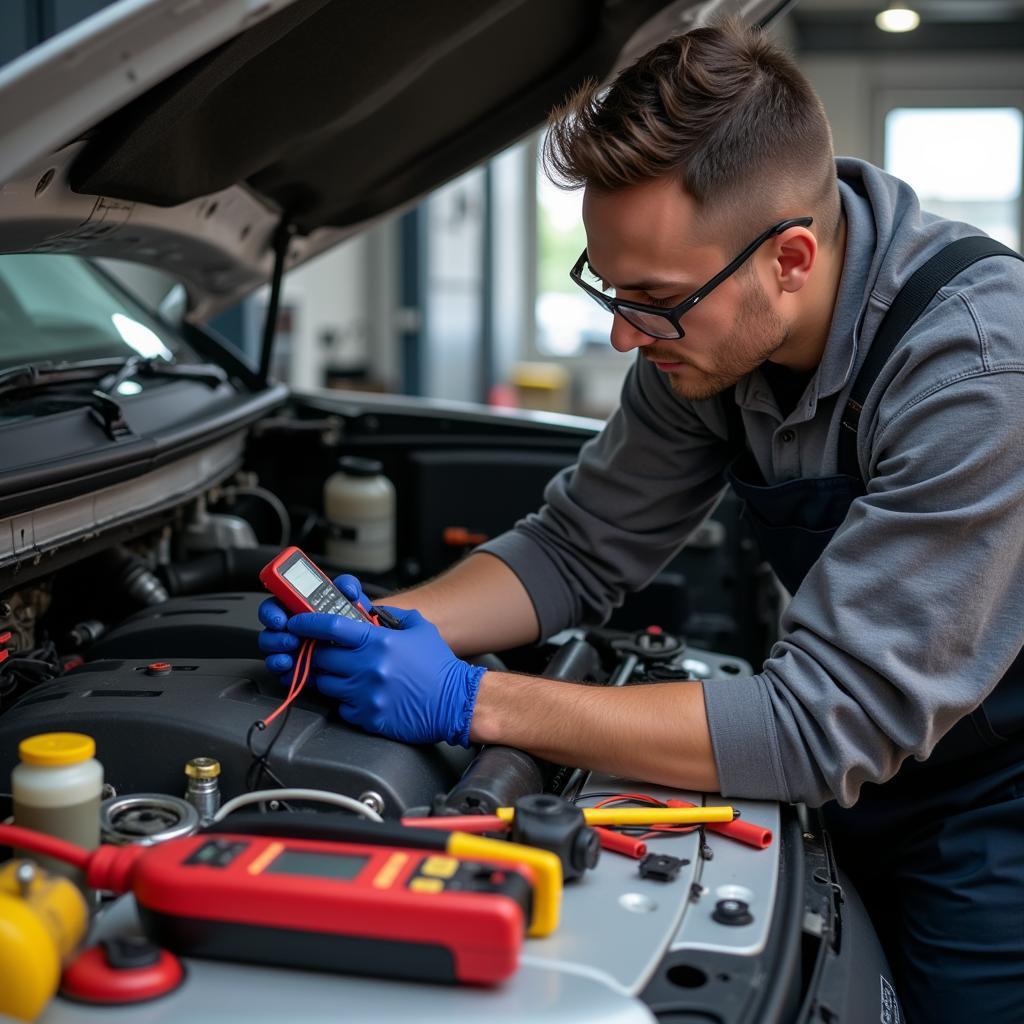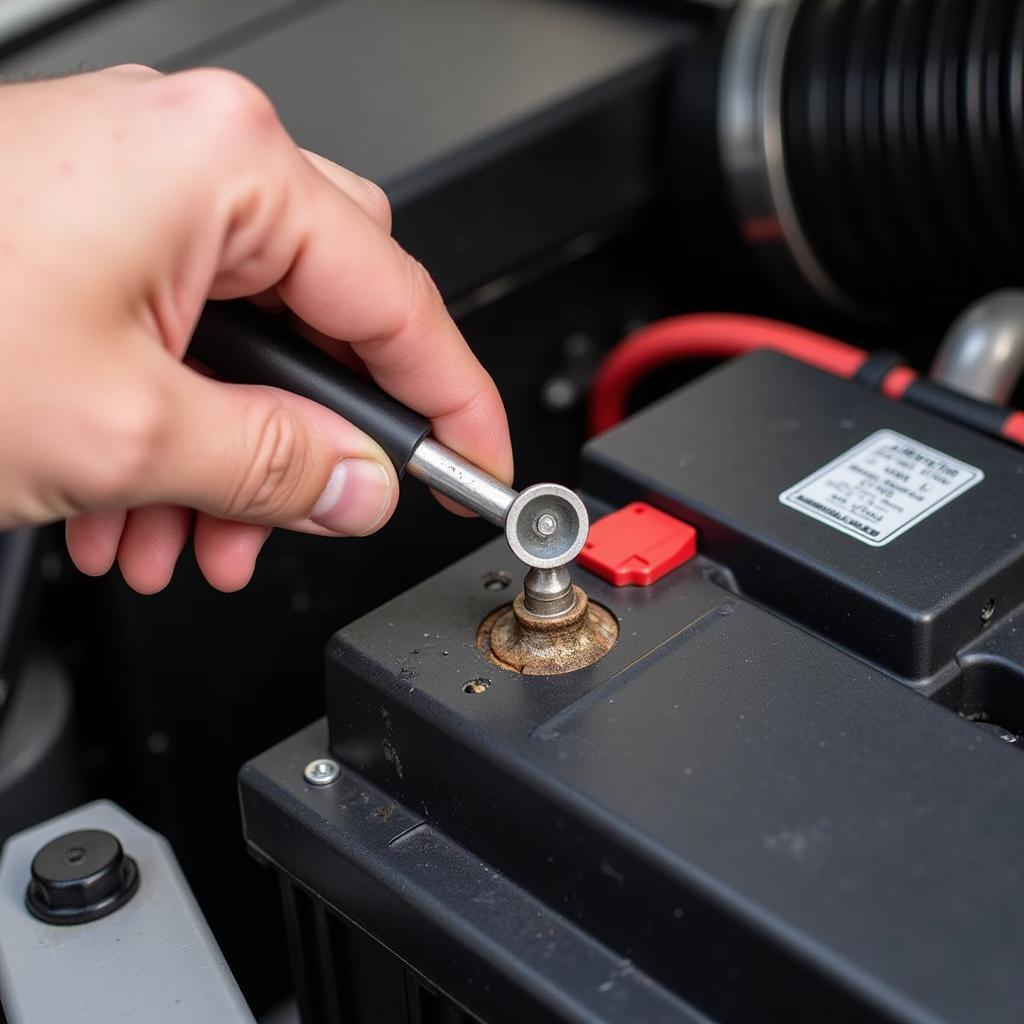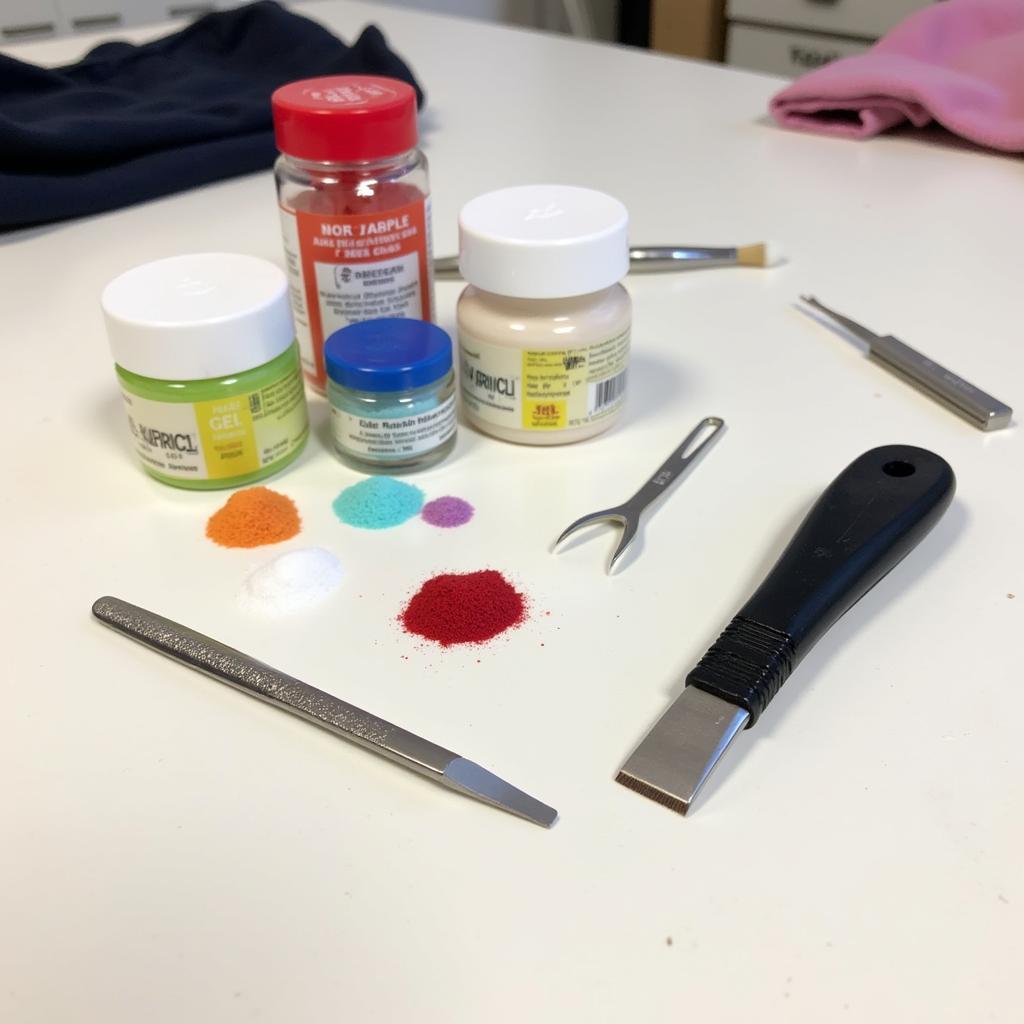Fixing A Flat Car Tyre is an inconvenient but essential skill for any driver. Whether you’re a seasoned mechanic or a new driver, knowing how to handle this common roadside emergency can save you time, money, and potential danger. This guide will walk you through the process step-by-step, providing valuable insights and practical tips to ensure you’re prepared for your next flat tyre.
how to fix a blown car tyre puncture
Identifying a Flat Tyre
How can I tell if I have a flat tyre? Obvious signs include a flapping sound, pulling to one side, or a noticeable drop in tire pressure. Less obvious signs, like sluggish handling or vibrations, might indicate a slow leak. Regularly checking your tyre pressure with a gauge is the best way to catch potential problems early.
Essential Tools and Safety Precautions
What do I need to fix a flat car tyre? Before starting, gather your tools: a spare tyre, jack, lug wrench, and owner’s manual. Safety is paramount. Park on a level, stable surface away from traffic. Engage the parking brake, turn on hazard lights, and place warning triangles behind your vehicle. Consider wearing a high-visibility vest.
Step-by-Step Guide to Fixing a Flat Car Tyre
- Prepare the Vehicle: Locate your spare tyre, jack, and lug wrench. Consult your owner’s manual for specific jacking points.
- Loosen the Lug Nuts: Use the lug wrench to slightly loosen the lug nuts on the flat tyre. Don’t remove them completely yet.
- Jack Up the Car: Carefully position the jack under the designated jacking point and raise the vehicle until the flat tyre is off the ground.
- Remove the Lug Nuts: Now, fully remove the lug nuts and carefully pull the flat tyre off the wheel hub.
- Mount the Spare Tyre: Align the spare tyre with the wheel studs and push it onto the hub. Hand-tighten the lug nuts.
- Lower the Car: Slowly lower the car using the jack until the spare tyre touches the ground.
- Tighten the Lug Nuts: Tighten the lug nuts in a star pattern using the lug wrench to ensure even pressure.
- Lower the Car Completely: Fully lower the vehicle to the ground.
- Final Tightening: Give the lug nuts one final, firm tightening.
- Stow the Flat Tyre: Store the flat tyre and tools securely in your vehicle.
Dealing with a Slow Puncture
What if I have a slow puncture? A slow puncture can be tricky. fix slow puncture car tyre explains various methods to deal with this issue, from using a tyre sealant to patching the hole. Remember, a spare tyre is often a temporary solution, especially if it’s a “space-saver” type. Get your flat tyre repaired or replaced by a professional as soon as possible.
“Ignoring a slow puncture can lead to more serious damage, even a blowout,” says John Smith, Senior Automotive Technician at Elite Auto Repair. “Addressing the issue promptly ensures your safety and the longevity of your tyres.”
Post-Fix Checklist
After fixing a flat car tyre, remember to check the tyre pressure of your spare tyre and inflate it to the recommended pressure listed in your owner’s manual. As soon as possible, have your flat tyre inspected and repaired or replaced by a professional. Don’t forget to also check the pressure in your other tyres.
Conclusion
Fixing a flat car tyre is a manageable task with the right knowledge and preparation. By following this guide and prioritizing safety, you can handle this common roadside issue effectively. For further assistance or inquiries, connect with AutoTipPro at +1 (641) 206-8880 or visit our office at 500 N St Mary’s St, San Antonio, TX 78205, United States. Remembering these steps can save you time and hassle when dealing with the unexpected inconvenience of fixing a flat car tyre.
how to fix a punctured car tyre,
FAQ
- How often should I check my tyre pressure? Check your tire pressure at least once a month.
- Can I drive on a spare tyre indefinitely? No, spare tyres are usually temporary and shouldn’t be driven on for extended periods or at high speeds.
- What should I do if my spare tyre is also flat? Call a roadside assistance service.
- How do I know the correct tyre pressure for my car? Check the sticker on your driver’s side doorjamb or your owner’s manual.
- What causes flat tyres? Common causes include punctures from nails or debris, impacts with potholes or curbs, and gradual air leaks due to valve stem issues or tire wear.
- Is it safe to fix a flat tyre on the side of a busy road? If possible, move to a safer location away from traffic before attempting a repair.
- What if I can’t loosen the lug nuts? Try using a longer lug wrench or your foot for added leverage. If they’re still stuck, call roadside assistance.







Leave a Reply